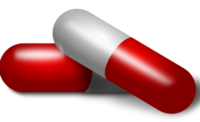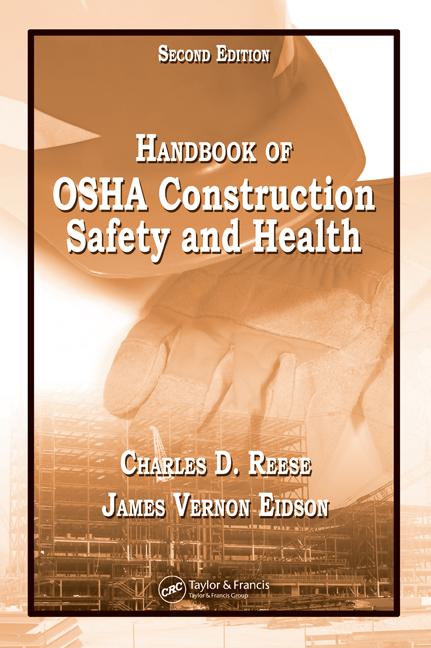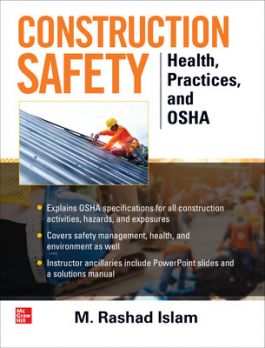Unintentional fatal drug overdoses in the United States nearly doubled from 1999 to 2004 (reaching 19,838 deaths), surpassing falls (18,808 deaths) to become the nation’s second-leading cause of accidental death behind motor vehicle crashes (43,432 deaths), according to a report released last week by the Centers for Disease Control and Prevention.
On the job, 5,702 deaths were reported in 2005 by the Bureau of Labor Statistics. Fatal, accidental drug overdoses (not suicides) now occur at more than three times the rate of on-the-job-fatalities.
Or to put it another way: your employees are more than three times as likely to die from an accidental drug overdose as being killed on your work site. Everyday, 51 people die of unintentional overdoses ‚ versus 15 job-related deaths.
The most vulnerable populations for accidental, fatal drug overdoses are white, non-Hispanic males, whose death rate increased 79 percent between 1999-2004.
The death rate for white, non-Hispanic females jumped 136.5 percent.
The most at-risk members of your workforce appear to be young people (age 16-24), whose death rate for unintended overdoses increased 113 percent from ‘99 to ‘04. Middle-age people (45-54) experienced an 87 percent increase in unintended fatal overdoses. Older middle-agers (55-64) experienced a 91 percent increase in unintentional fatal overdose.
Your young employees may feel invulnerable and prone to experiment. Middle-age males and females in your workforce face many stresses in their peak earning years. And older middle-age employees are more apt to be battling chronic diseases and the inevitabilities of aging.
This is bulletin board material. Make sure your employees are aware of these disturbing statistics, and if you already haven't, make preventing accidental overdoses part of your off-the-job safety program.
Overdoses don't discriminate by age, color or income. Everyone is at risk.
Painkillers kill Sedatives and prescription painkillers like Vicodin and OxyContin were the chief cause of the increase, according to CDC researchers.
OxyContin has been blamed for hundreds of deaths in the U.S. in recent years, becoming known as “hillbilly heroin,” a scourge in Appalachia, according to an Associated Press report. The most dramatic increases in accidental drug overdoses from 1999-2004 were for white females, young adults, and Southerners.
R&B singer Gerald Levert’s death last fall at his Cleveland suburban home has now been attributed to an accidental mix of prescription and over-the-counter (OTC) meds that probably stopped his breathing, according to an Association Press report. Levert, 40, suffered from chronic pain and anxiety. The coroner found Levert’s bloodstream contained two over-the-counter antihistamines and the prescription narcotic painkillers Vicodin, Percocet, and Darvocet, plus the anxiety med Xanax. That cocktail mix proved to be deadly, according to the AP report.
“There is a misperception that because a drug is a prescription medicine, it’s safe for non-medical reasons, and clearly that is not true,” Dr. Anne Marie McKenzie-Brown of Atlanta told the AP
The surging increase in fatal overdose accidents should send alarm bells off in workplace safety departments - triggering alerts and communications to all levels of the organization urging new caution about the risks of playing “fast and loose” with prescription and non-prescription meds, especially powerful prescription painkillers.
The risk is not only accidental death, but woozy and drowsy drugged workers operating dangerous equipment that could put co-workers at risk.
Why the surge? In teaching your employees about the rising risks of accidental, deadly drug overdoses, it helps to understand why this surge is occurring.
Consider: The vast baby boomer population that indulged and experimented with drugs early on is carrying into old age some casual, risky behaviors regarding drug use.
In an analysis by Scripps Howard News Service of death records for more than 304,000 boomers who died in 2003, the study found most of those dying were white males in their mid-to-late 40s. Nearly 70 percent had accidental overdoses, according to the Detroit News.
Sign of the times: Demand for triple-wide, supersized medicine cabinets, or “walk right in” medicine cabinets, is rising, as described in a 2004 New York Times article. Need we say more?
Consumption is up: The average number of annual prescriptions per person in 1993 was seven; by 2004 the average had reached 12, according to the 2005 book, “Generation Rx.” In 2004, almost half of Americans used at least one prescription drug daily. One in six were taking three or more prescription drugs each day, according to “Generation Rx.”
Running out of ink: The total number of annual prescriptions written in the U.S. is now three billion, according to the book.
Monumental marketing: Behind this assembly-line prescription writing is a major offensive by the Big Pharma companies to win the hearts and minds of physicians, nurses, and consumers. Greg Critser, author of “Generation Rx,” offers these findings:
Exhibit A - there are about 80,000 to 90,000 pharmaceutical sales reps, or about one for every five physicians.
Exhibit B - Pharma companies combined spend between $8,000 to $15,000 selling every physician, every year.
Exhibit C - Direct-to-consumer advertising by Pharma companies totaled $2 million in 1980. In 2004, advertising to consumers reached $4.35 billion.
Exhibit D - This avalanche of advertising aims to “brand” medical conditions and empower patients to request specific remedies. Create an awareness of the disease, and then offer the solution. Think about the pharmaceutical commercials you saw during the Super Bowl, or on CBS’s Nightly News. Most focus on the disease first, how it interferes with quality of life, and then offers the solution
Proxies for care: At the same time this flood of ads is running, Americans are more willing to experiment with prescription and over-the-counter drugs, or to be experimented upon, writes Critser. Why? Many patients are battling what they consider too much stress, and they just want to be fixed. Plus, a quick fix makes sense when managed care forces doctors to see four or five patients every hour. Pills become proxies to physician care, writes Critser.
Contest of wills: “My patients are looking for pill to make them well, instead of making lifestyle changes,” writes Dr. John Abramson in his 2005 book, “Overdosed America.” “It becomes a contest of wills between myself and my patient. Patients will say, ‘My friends say that works well for them. I want that’.”
With not enough time during a doctor’s office visit to argue, physicians often accede to patients’ requests. Physicians prescribed the requested drug 80 percent of the time, according to a 1999 Prevention magazine study.
Who is at-risk? Dr. Critser, author of “Generation Rx,” says small children, teens, college students, middle-aged moms and dads, and seniors all present their own risk profile.
Young children, say under age 5, are susceptible to inadvertent overdoses prepared by adults - a tablespoon instead of a teaspoon of cough syrup, for instance.
In a case described on the Agency for Healthcare Research & Quality’s Morbidity and Mortality Rounds on the Web, parents brought their five-year-old son to the emergency department with a fever, cough and headache. He was discharged after receiving one dose of acetaminophen in liquid form (typically found in OTC drugs like Tylenol). Two days he returned to the ED, now vomiting, suffering lethargy and upper abdominal pain. The parents had misread the instructions for administering liquid acetaminophen, giving multiple doses of 20 mL (equaling 960mg per dose) instead of the correct does of 6mL (288 mg). The boy was admitted to the hospital and was safely discharged days later. Young children are also natural explorers who can climb toilets and chairs and find bottles of pills on shelves, atop the refrigerator, and behind medicine cabinet mirrors.
Youth in grade school through high school are increasingly medicated for depression, attention-deficit-disorder, bi-polar diseases, and a host of behavioral problems.
College students, often away from home, visit campus clinics anxious and stressed-out over grades, relationships, and balancing jobs and sports and class work. They complain of sleep disorders, poor appetites or overeating, and panic attacks or depression. Abuse of OTC sleep aids and "no doze" agents is not uncommon.
Aging middle-aged parents, single moms or dads, and the lonely unattached face various pressures (mortgages, tuitions, retirement savings, care of elderly parents, lack of social support, income struggles). Daily exercise, meditation or yoga would be nice, but their calendars are booked. Sticking to healthy diets, cutting out alcohol and smoking - great, if you're not sapped and low on willpower. The alternative seems less a struggle: prescriptions for anti-depressants, sedatives, libido enhancers, painkillers, blood and cholesterol reducers, and gastrointestinal agents.
Elderly seniors seeks all sorts of prescriptions to extend their aging process.
What to do Women typically are the safe keepers of their families’ health, according to healthywomen.org. Women purchase their families’ medications, take their children and sometimes their older parents to health care providers, and tend to make most of the family healthcare decisions. Here are some tips for being proactive about possible overdoses:
Asssess yourself, or someone under your care, about potential abuse: Have you ever felt the need to cut down on your use of prescription drugs?
Have you ever felt annoyed by remarks your friends or loved ones made about your use of prescription drugs?
Have you ever felt guilty or remorseful about your use of prescription drugs?
Have you ever used prescription drugs as a way to "get going" or to "calm down?"
By Carol Eustice, Preventing Abuse of Prescription Drugs, posted on About.com
Before you leave your doctor’s office: Have you doctor read any medication instructions to you.
Write down the instructions in your handwriting on a piece of paper.
Make sure you doctor knows all prescription medications you are taking, either from earlier visits to him or her, or from other physicians treating you.
Ask about possible interactions.
Before leaving your pharmacy: Know the drug name, dosage, and prescribing instructions for every prescription medication you are filling at the pharmacy. Write down this information, keeping a medication diary on your computer.
When you pick up your prescription from the pharmacy, compare the label on the prescription bottle to the information you have recorded for that drug.
Drug labels can be confusing. Annals of Internal Medicine researchers in 2006 interviewed 396 English-speaking adults who were in clinic waiting rooms. Patients were asked to interpret or explain directions on labels. Of the incorrect responses, 52 percent involved dosage errors. (Teaspoon mistaken for tablespoon, etc.) Only ten percent read the auxiliary stickers warning of special instructions or side effects.
If you are picking up a drug for the first time, search the Internet for the name of the drug and information imprinted on the pill, to make sure you’ve got the right med.
Ask your pharmacist about any potential side effects or adverse reactions to the medication. Are there side effects you should simply tolerate? What side effects should make you stop taking the med? When should you call your pharmacist or physician? When should you seek treatment immediately?
Don't be bashful. Most of us simply pick up our meds, check off the "No questions" box, and sign our lives away at the cash register.
If you are picking up a refill, compare the pills in the new bottle to any remaining in the previous bottle. Look at color, shape and imprint on both sides of the pills. They should be identifical.
Don’t assume everything is without problem until you actually check. The ever-increasing volume of prescriptions being called into pharmacies raises the odds of error. Plus, many prescription drugs have very similar sound and looking names with one or two letters of each other.
Safety at home: Chances are women will know more about the cabinet full of over-the-counter decongestants, prescription drugs for various ills, maybe some herbal treatments, vitamins, and minerals, perhaps some expired medications and prescriptions no longer used.
Take an inventory. Keep an updated list of all the meds (prescription, OTC, herbal, supplements) you, or those you care for, take. Make this list available to all healthcare providers.
Your list should include: Date of prescription Dose or strength What is it for How much you take and how often How long you are supposed to take it Any foods or other things to avoid Likely side effects Side effects you experienced Name and phone number of prescriber Name and phone number of pharmacy
Take medications only as directed. Read and follow instructions on the label. Make sure the prescription includes specific directions for taking each med.
Ask questions about your meds if you don’t understand how to use them. Take the correct amount of medication. Do not take more or less than the label indicates. Do not give adult doses to children, or guess at the dose you should give them. Ask your pharmacist or primary care physician.
Do not take medicine in the dark, or without the benefit of glasses if you wear them.
Do not share medications prescribed for someone else.
Be aware that medications can interact with each other and even OTC and herbal medications.
Keep you medications in their original packaging with their full instructions.
With OTCs, read the label and informational insert carefully for any warnings or possible side effects, especially if you have a health condition such as diabetes, thyroid disease, high blood pressure, or heart disease.
Read the label every time you take the medication to prevent mistakes. This is especially important if you take more than one drug.
Be sure to store meds where children can’t reach them or see them. Best to keep your meds in a locked box or cabinet. Don’t store meds with household cleaners or chemicals, and don’t store them in the same place you keep you pet’s medications.
Responding to an overdose
General signs:
problems with vital signs - pulse, temperature, respiratory rate, blood pressure sleepiness, confusion and coma, if person breathes vomit into the lungs skin can be cool and sweaty, or hot and dry chest pain is possible. Shortness of breath may occur. Abdominal pain, nausea and vomiting and diarrhea are possible. -
Signs and symptoms of sedative overdoses (Paxil, Xanax, Lorazepam, Clonazepam)
trouble breathing slurred speech unsteadiness dizziness or fainting spells vomiting being unable to think or respond normally shock coma
Signs of depressant overdose (Prozac, Lexapro, Zoloft, Imipramine, Celexa, Effexor, Wellbutrin, Cymbalta, Trazodone, lithium):
slow, infrequent or shallow breathing blue lips or fingernails cold or pale skin, show or faint pulse snoring or gurgling noises inability to be woken up from nodding off
What to do: Stay poised and see if you can get a response from the person by pinching the back of their arm, calling their name, or rubbing your knuckles against their chest.
If there is no response, check to make sure their airway is not blocked and see if they are breathing
Roll them over on to their side, into the recovery position, and perform CPR
Experts - your doctor, local poison center, or emergency department - may be able to help determine the seriousness of the suspected drug overdose. Be ready to say the specific name of the drug, the amount of drug taken, and the time it was ingested. The bottle of the drug will have some of this information. You are not expected to know when a drug overdose is serious. If you can't reach a qualified profession by phone, take the overdosed person to the nearest hospital.
In life-threatening situations, call 911 for an ambulance
Anyone who is with a person who overdoses on drugs can assist by finding all medications or chemical containers and bringing them to the emergency department doctor
Myths: Putting people in cold baths - risk of drowning, hypothermia, and time to fill bath
Walking or dragging them around the room - may increase heartbeat and absorption of drug; patient could be dropped
Inflicting pain through hitting or even burning - willpower and stimulation won't overcome effects of overdoes
Final reminders:<.em> All drugs have the potential to be misused, whether legally prescribed by a doctor, purchased over the count at the local drug store, or bought illegally on the street.
Taken in combination with other drugs or with alcohol, even drugs normally considered safe can cause death or serous long-term consequences.
The majority of overdosing with OTC drugs, such as Coricidin, occurs in conjunction with the use of alcohol or another drug.
When two or more drugs are mixed in the body, they may interact with each other and produce uncomfortable or even dangerous side effects. Your healthcare provider needs to know what other meds you take, including prescription or OTC meds (even seemingly minor aspirin or sleep aids).
It's easy to make a mistake when you're busy or overseeing medication for more than one family member. Be organized. Write down instructions for each med and each family member so you don't have to remember everything. Write down emergency contact numbers and place them by a phone, and log the phone numbers in your cell phone directory.
Preventing Accidental Overdoses



